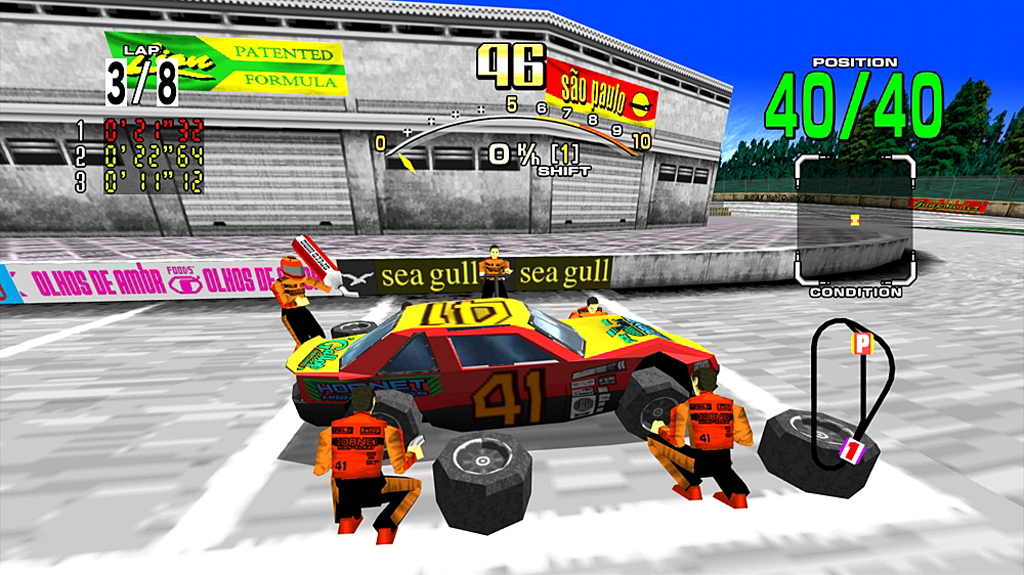

"The Queen of Speed" also has quite a reflective feel and could probably be classified as 'new age' music. However, it suffers from a misfitting electronic backing track and a mere two minute playtime. "Daytona in the Night" is a chillout version of the main theme with soft vocals, piano, and synth work. Yoshiyuki Ito's two arrangements are quite different style. It goes to amazing places most wouldn't expect.
DAYTONA USA GAME REVIEW FREE
"Tornado" is a refreshing contrast from the other arranged tracks since there aren't any vocals to be found it's more of a free instrumental jam between Mitsuyoshi and Namiki with lots of jazz fusion and funk influences. It's not quite the romantic arrangement one would expect and easily the least controversial of the arranged version. The jazz instrumentals are quite sassy, but the vocals are even more ridiculous than the original. The arrangement feels more funk-influenced than the original and, while the instrumental backing is usually straightforward, Namiki's guitar work spruces it up. "Pounding Pavement" is much more charismatic than before with the extended lyrics and Takenobu Mitsuyoshi's more refined vocals. The original version ends with a jingle collection featuring various composers and classic references as well as a sound effects collection.ī-Univ are responsible for several other arrangements at the start of the disc. The rest of the soundtrack is mainly composed of short menu themes and jingles, though attention was still paid to maintaining the quirky funk flavour and there are some especially impressive tracks such as the hip-hop-flavoured "Start Your Engines", bouncy "Rolling Start", or serene "David Goes to Victory Lane". This track definitely has harder rock backing than the rest and the vocals take the eccentricity up another notch. A secret track in the game, "Pounding Pavement" is easily accessible on this album. An interesting artefact of the loop method, the artifical vibrato sound of the vocals is even more obvious than before. The instrumentals are as central as the vocals in "Sky High" with a sassy trumpet often taking the lead.

However, it certainly adds to the racing feel of the game with its punchy chord progressions and rapid percussion. "The King of Speed" will be either something you love or hate with its bellows of 'rolling start' (or, in Mitsuyoshi's semi-intentional Engrish, 'roorying staaaar'). The rest of the Daytona USA stage themes continue to focus on vocal use. The mixture of rock and funk instrumentals ensure a very peppy and varied accompaniment too. He still succeeded in producing a really rich, cutting-edge, if ridiculous track for its time. Mitsuyoshi had to use quite a few novel techniques in order to integrate vocals on to primitive Arcade sound boards, opting to loop several short but memorable vocal samples. It initially appears in a shortened 'advertise' version and receives a fleshed-out stage theme version mid-way through the soundtrack. The appearance of Daytona USA's Arcade soundtrack in the second half of the soundtrack only reaffirms the theme's classic status. The instrumental elaborations really flesh out the theme with particularly highlights being Mitsuyoshi's bouncy piano work and Koichi Namiki's guitar solo. The lyrics at the 0:28 and 0:53 mark are really enjoyable and amusing, pronounced in true English and capturing Mitsuyoshi's rock spirit. However, the vocalist soon demonstrates his liberation from the technical limitations of the Arcade version a little later in the theme.

It gets straight to the essence of the theme with Takenobu Mitsuyoshi's characteristic bellows of the 'du du duuuu du' and 'daaaytoona' lines. The album opens with a special arrangement of the series' main theme "Let's Go Away". The successful game and score was commemorated with an album release featuring both the original tunes and arrangements by B-Univ and Yoshiyuki Ito.

While Mitsuyoshi had produced functional scores to games like Strike Fighter, G-LOC, and Virtua Racing, this was the first time he was really able to flex his creative muscles and make a global impact. Led by Takenobu Mitsuyoshi, score aimed to be especially novel with its blend of quirky vocals with funk and rock instrumentals. In 1994, the racing game supremos at Sega decided to create an Arcade game that was superior in every way to Namco's 1993 hit Ridge Racer.


 0 kommentar(er)
0 kommentar(er)
